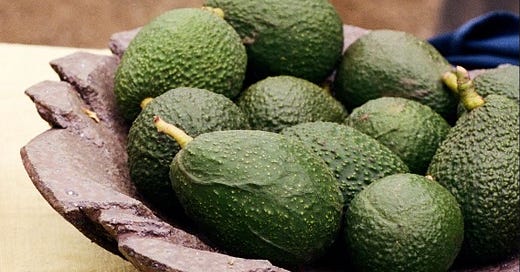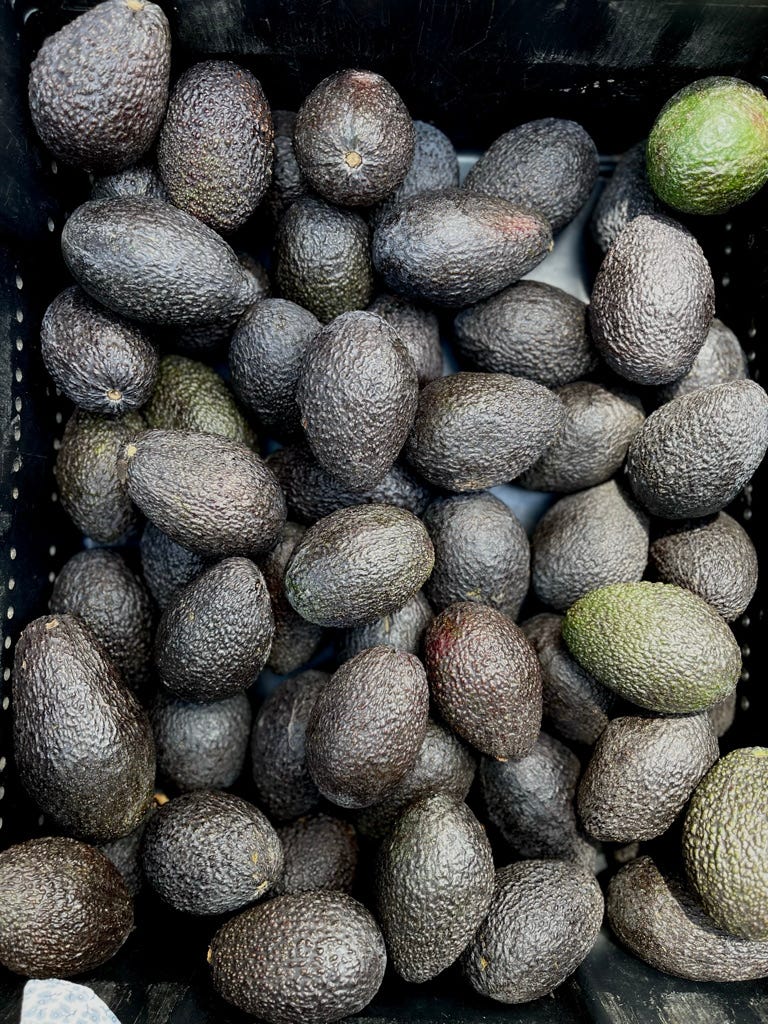Dear readers and produce lovers, can you even believe I waited this long to talk about AVOCADOS?! I want to tell you the tale of a creamy, buttery, perfect fruit that has come to be known mostly in its one form—the Hass. But I want to go deeper. Who else is the avocado? What are her other forms, colors, and flavors? Why do most only know of the Hass? Who are the Reed, the Zutano, and the Mexicola? What about the Fuertes and the Pinkertons? What do they taste like? How do they FEEL?
On a cool Wednesday morning (it was last Wednesday), I saw my first glimpse of what I can only compare to my childhood crush/love. I saw the first-of-the-season Reed avocado. Many moons ago, this green cannonball torpedoed into my heart and became what I now see as the perfect avocado. She's buttery and creamy, doesn't oxidize, and is the size of a softball. But more on her perfection later. First, I want to know why the Hass has become ubiquitous, and synonymous with the definition of AVOCADO, how it won that commercialization race, and who is the judge here anyway.
I'm obviously not the only one who puts the avocado at the base of the food pyramid. Americans, on average, devour around 7 pounds of avocados per person each year, and it's only increasing. Consumption has TRIPLED since the early 2000s (that is a LOT of avo toast…), yet almost 100% of that consumption is solely the Hass variety. People have been eating avocados for thousands of years, breeding hundreds of varieties, yet this pebbly black skin newbie (bred less than 100 years ago) dominates. The story goes a little like this:
Keep reading with a 7-day free trial
Subscribe to Sam Loves The Market to keep reading this post and get 7 days of free access to the full post archives.







